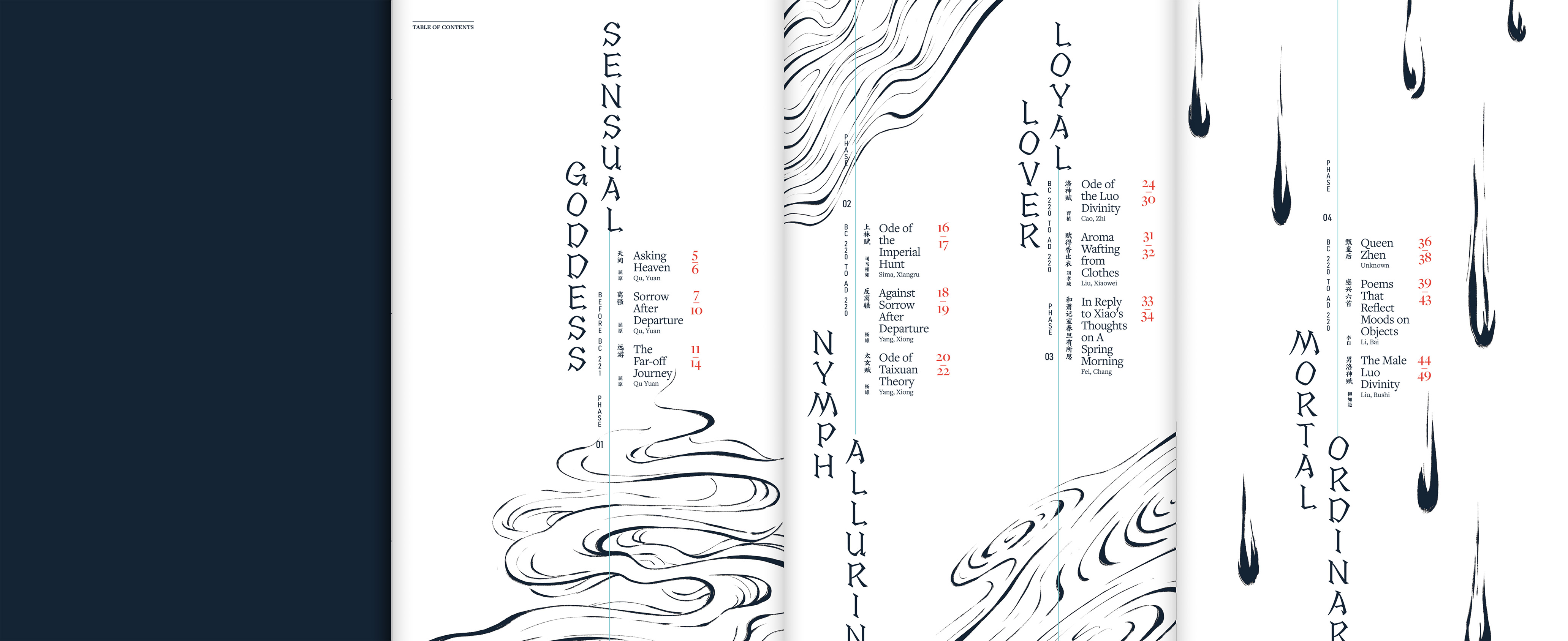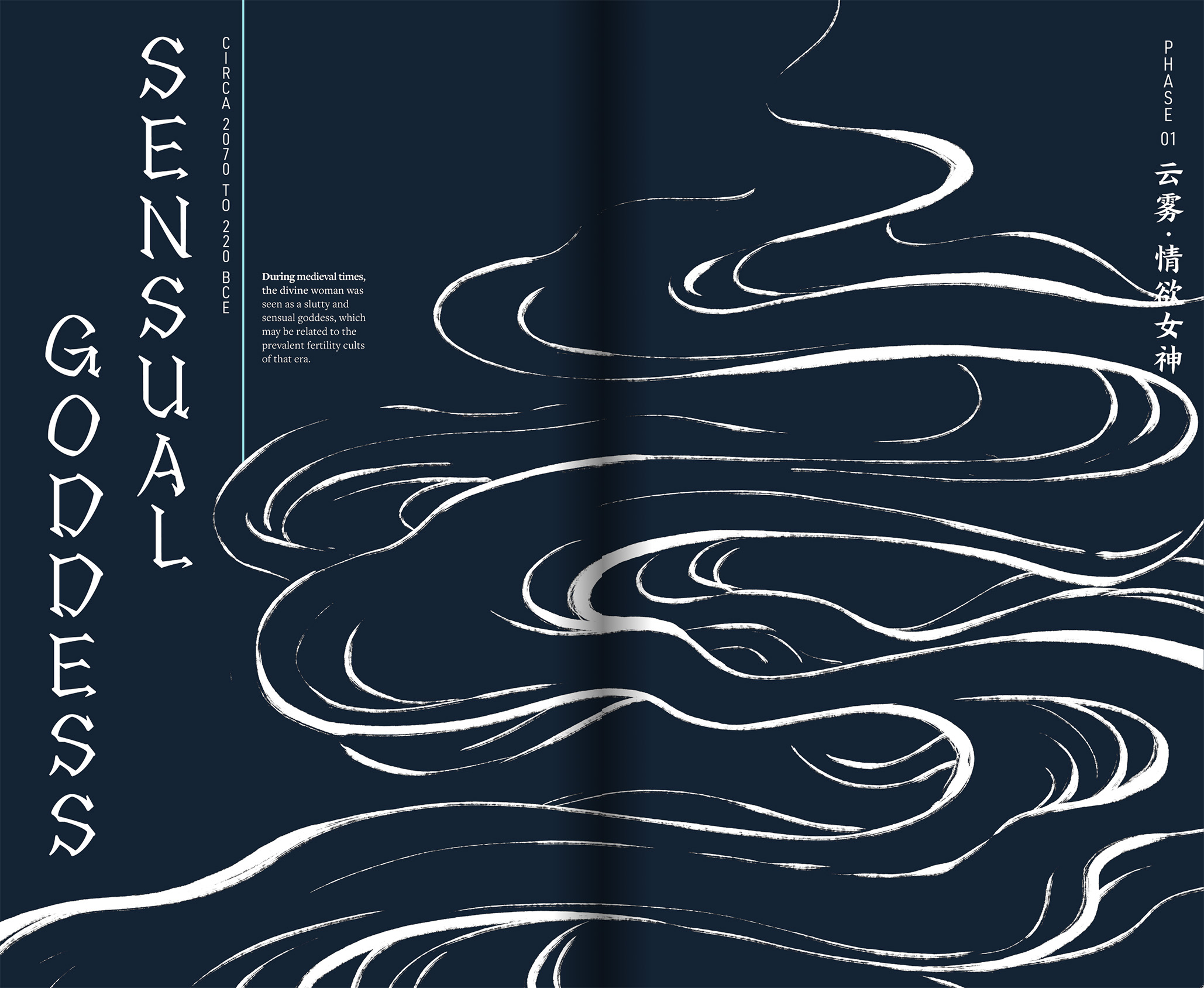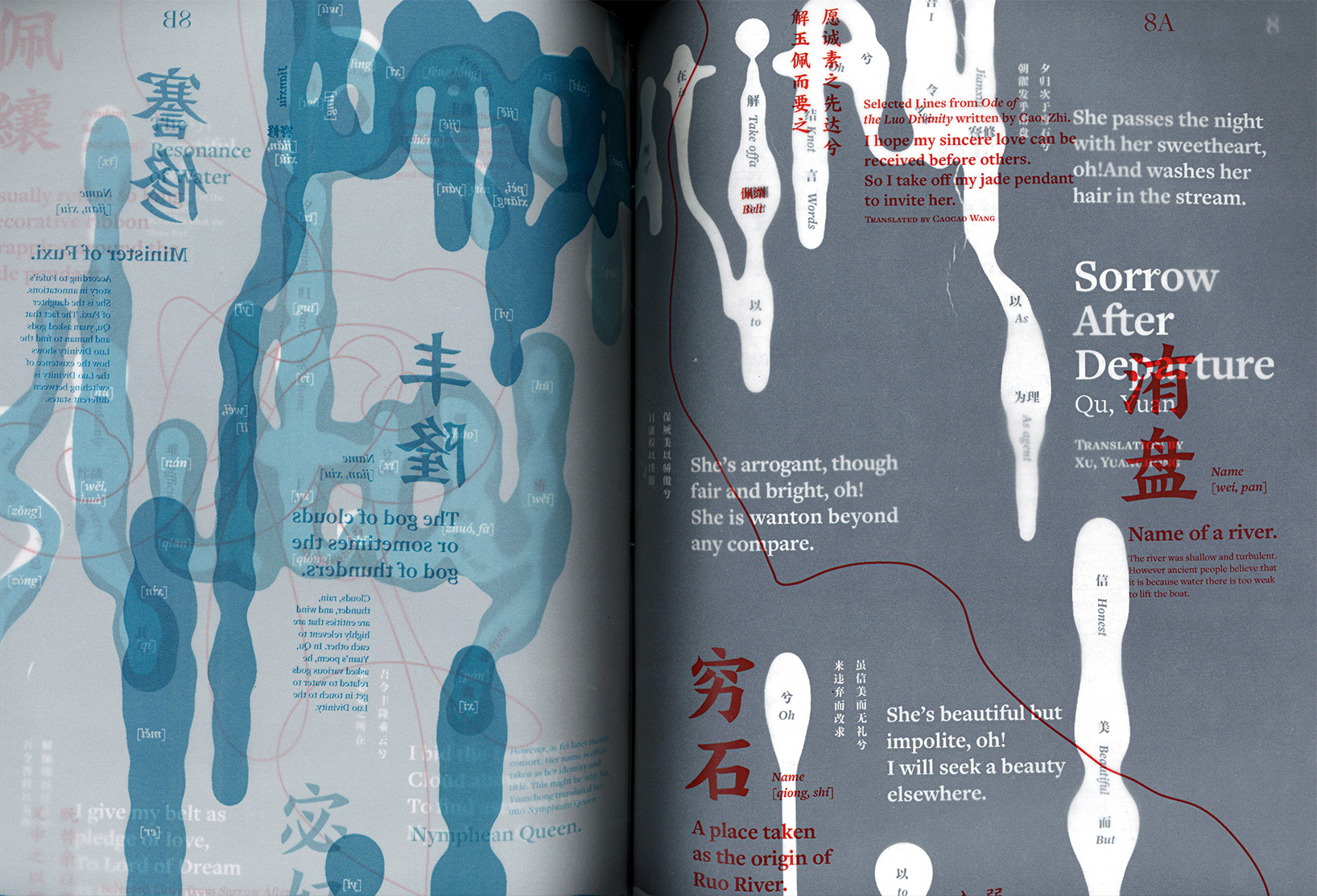
Rain and Tears:
Changing Phases of the Divine Woman's Imagery
Changing Phases of the Divine Woman's Imagery
Typography, Lettering, Illustration
SEP 2024–MAY 2025
OVERVIEW
As the starting point of my thesis
project in MICA GDMFA, this
publication weaves together poems
from different eras, forming a
scroll that traces the permutating
imagery of the Divine Woman.
Rain and Tears include several sub-projects. Following the links beneath for more information.
View Exhibition ←
View Motion ←
View Thesis Book ←
View Custom Type
Inkai Varaible ←
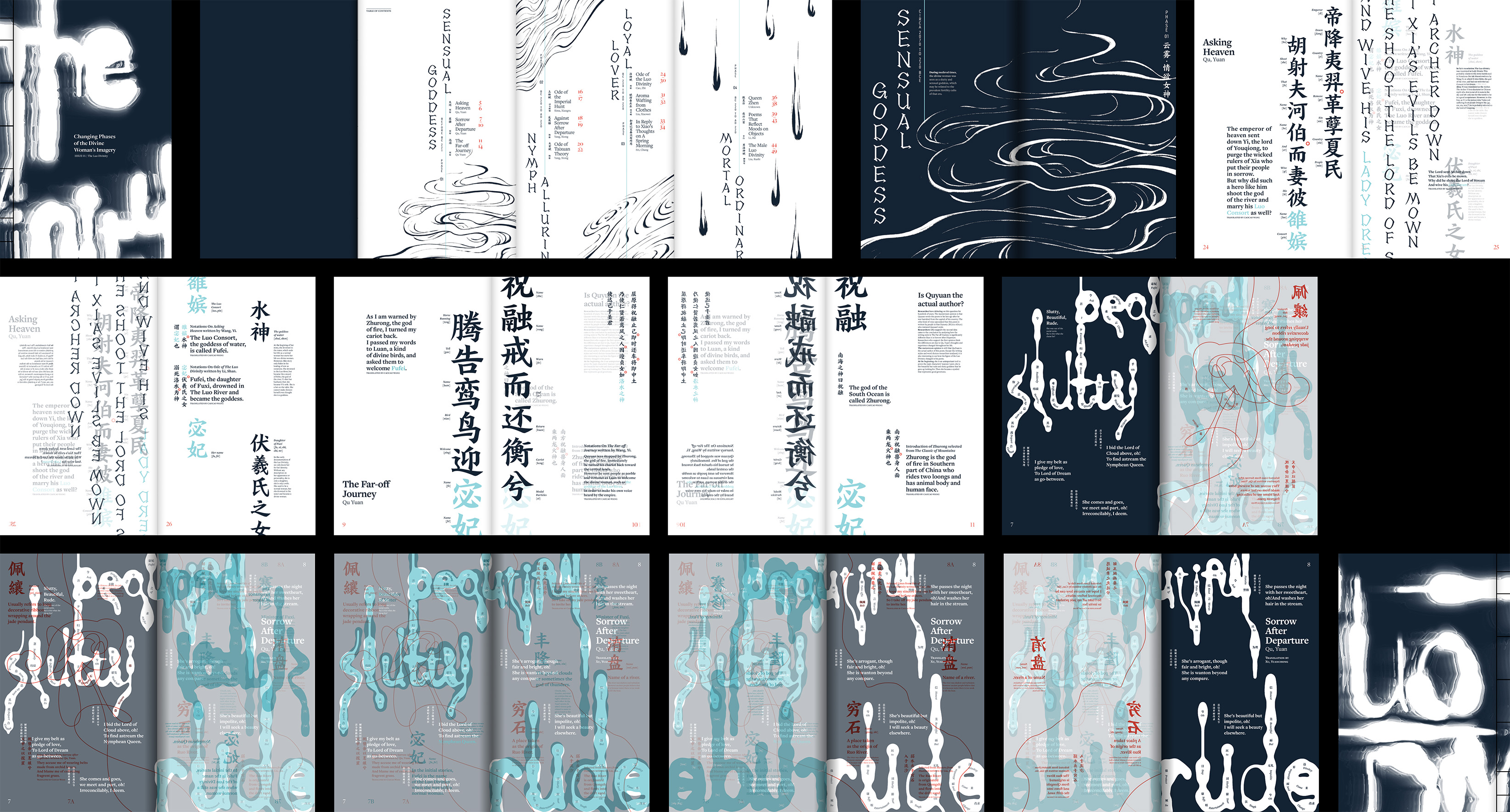
LAYERING TYPOGRAPHY
In many poems, the Divine Woman is treated as an object—no different from the beautiful flowers and fragrant plants that recur throughout the texts. Over thousands of years, literary works have accumulated and layered upon one another, increasing the density of her imagery while distancing us from the original girl who drowned and became the Divine Woman.To reflect this layered history, I used overlapping typography throughout the zine.
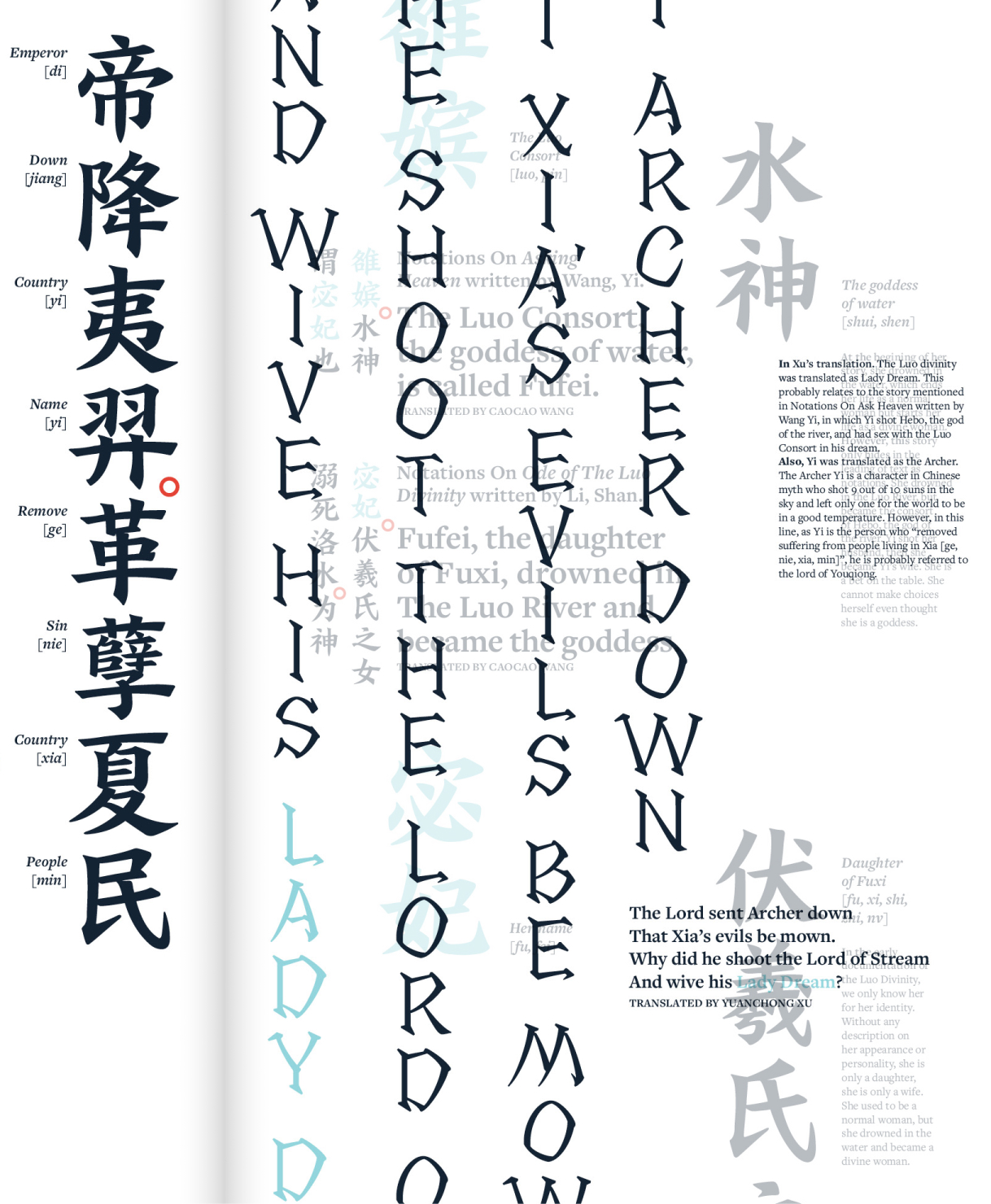
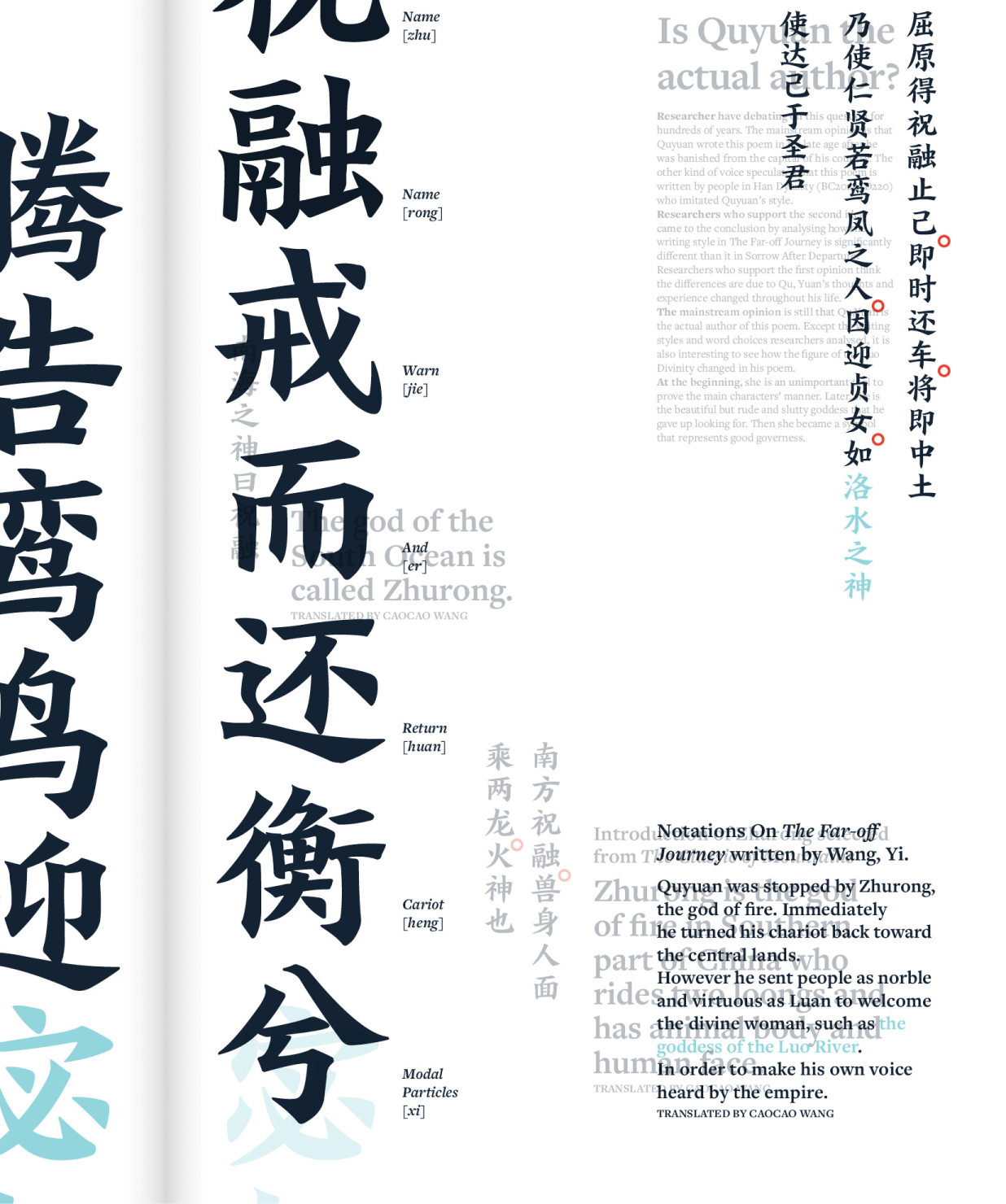
FLUID LETTERING
The Divine Woman, and actually all women, are tightly connected with water imagery. Therefore, I created a fluid lettering form which is shaped by either voice volumn or shifting water level.
Letterforms shaped by voice readings are placed beneath layers of interpretation, such as critical terms, poetic explanations, and lettering shaped by the shifting water levels when I read these poems underwater.
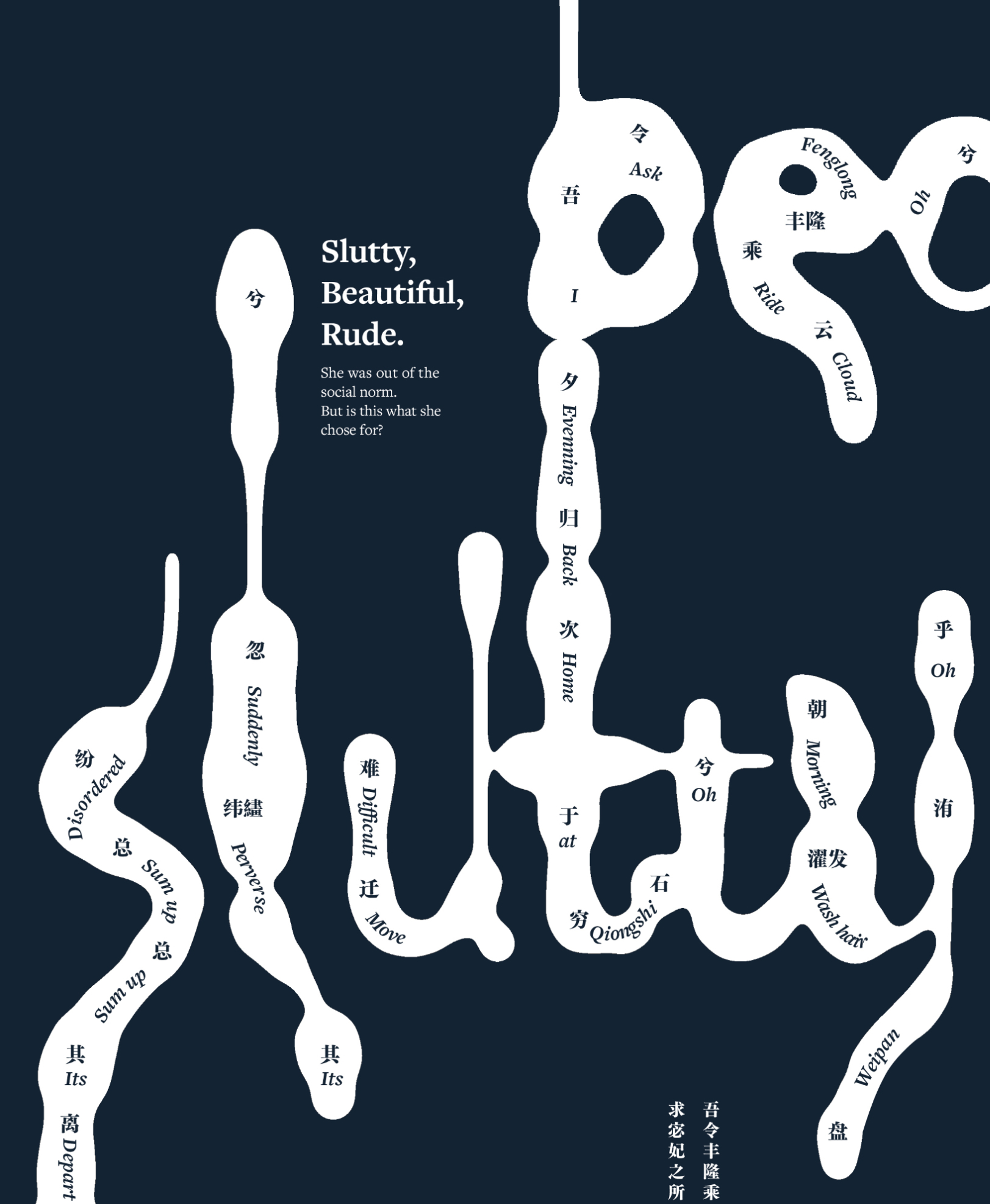
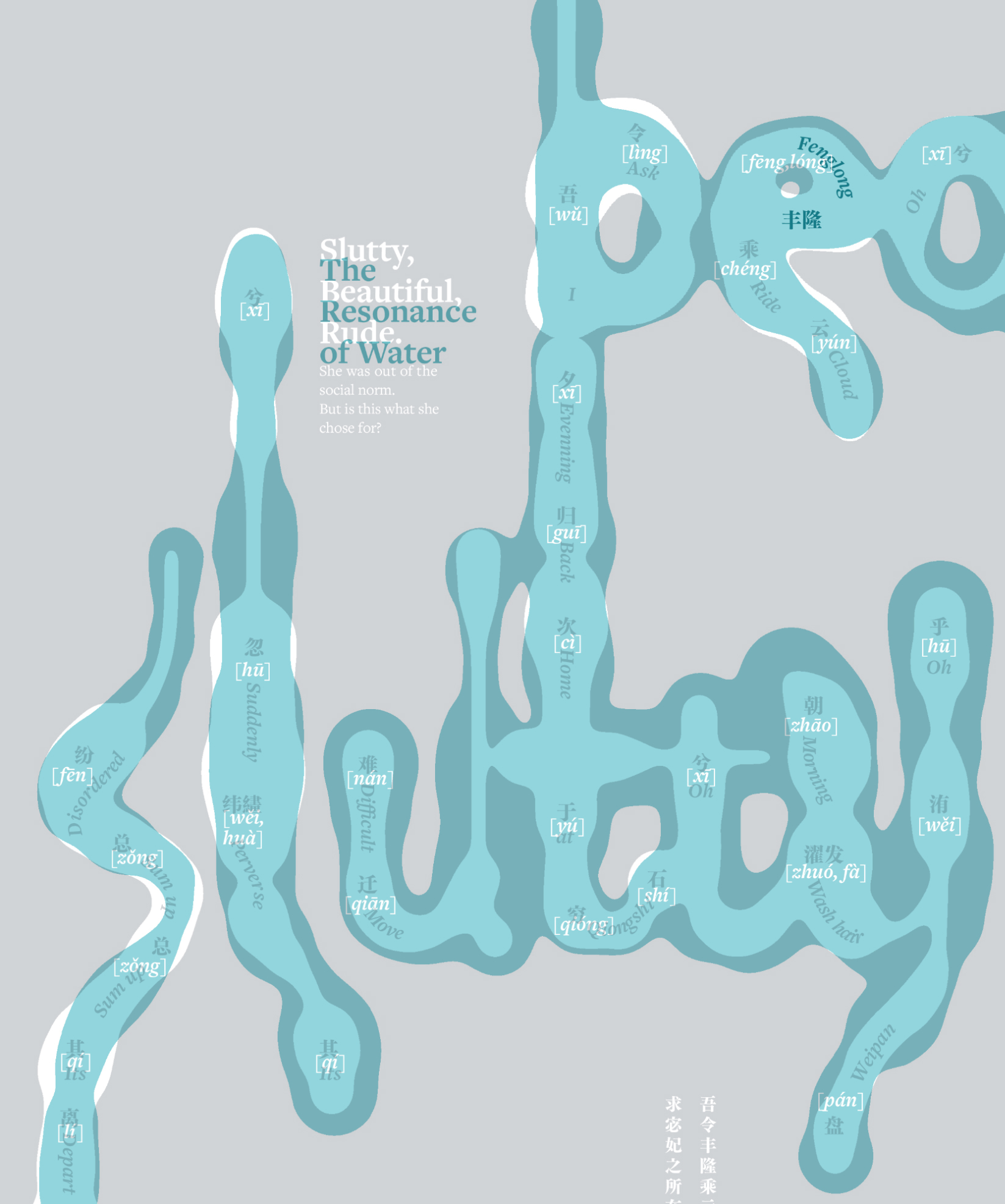
ILLUSTRATION
The illustration uses a style of traditional Chinese sketches to illuminate four phases of water that usually connect with corresponding type of the Divine Woman.
Sensual Goddess: clouds; Alluring Nymph: turbulance; Loyal Lover: ripples; Ordinary Mortal:rain.
You can view more about stories of different phases of the Divine Woman on → Exhibition ← page.
